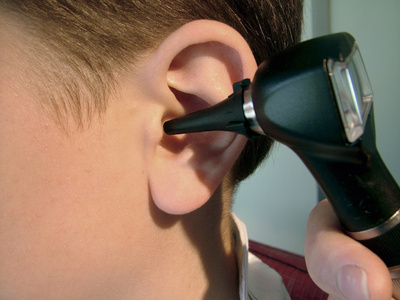What is an ear infection?
An ear infection is an infection which can affect any part of the ear. The middle ear is located directly behind the eardrum and this sort of infection is usually caused by trapped bacteria and viruses. The outer ear is the portion of the ear from your ear lobe all the way to the eardrum. This type of infection can be caused by irritation from a foreign object.
Wondering if you or your child has an ear infection? Some common symptoms include inflammation or pain inside the ear, fever, difficulty hearing, discharge running out of the ear and itching or irritation around the ear. Although ear infections usually occur in children, it is a myth that adults will never encounter ear infections. Read on to find out more myths about ear infections you may not have known.
All ear infections need antibiotics
Ear infections can be an uncomfortable and painful experience and you should see your GP for a proper diagnosis and subsequent treatment. However, most ear infections resolve on their own within three days so antibiotics are not always needed. While antibiotics kill bacteria and can be useful for clearing up infections, they will not drain the fluid produced during an ear infection. Dependent on age, history and risk factors, your GP will know if antibiotics are the way to go.
You can’t go swimming if you have an ear infection
Ear infections are usually located in the middle ear, behind the eardrum. Due to its internal location, exposure to external elements such as wind and water will not exacerbate the symptoms of the infection. It is a myth that you have to avoid swimming if an ear infection is present. Unless the eardrum has ruptured, the space where the ear infection is located is concealed from the water. You shouldn’t go swimming if you may have a perforated eardrum. If you have fluid running out of your ear, you might have a perforated eardrum.
All ear pain means an ear infection
Don’t be quick in assuming that ear pain means you have an ear infection. Although ear pain is a prominent symptom of an ear infection, earaches may just be a side effect of a common cold. If you notice a sore throat, coughing, nasal congestion and sneezing, the earache may be another symptom which should clear up around the same time as your other symptoms. With an ear infection, however, you will notice more ear sensitivity, temperature spikes and irritability, and fewer symptoms in your throat and sinuses.
Grommets (ear tubes) are essential
Grommets can be a great help in treating patients with recurrent middle ear infections. Grommet surgery is needed to insert these tubes which help drain the fluid that has built up behind the eardrum. However, grommets should not be your first option for treatment as it is not always necessary. Most ear infections clear up in a matter of days and this treatment is usually only recommended for children with repeated infections, longer than three months. Surgery, no matter how common, can be scary for kids, and parents should be well informed of the risks associated with general anaesthesia. If you’re interested in finding out more information about ear infections, Dr Sufian Ali has written an in-depth guide to ear infections for Medicspot, along with Professor Antony Narula, a Consultant ENT Surgeon and Past President of ENT UK.



A useful and interesting piece, thank you Dr Abbs.
on November 5, 2019 at 6:58 am talkhealth